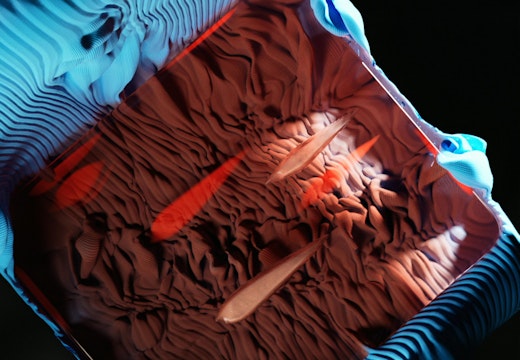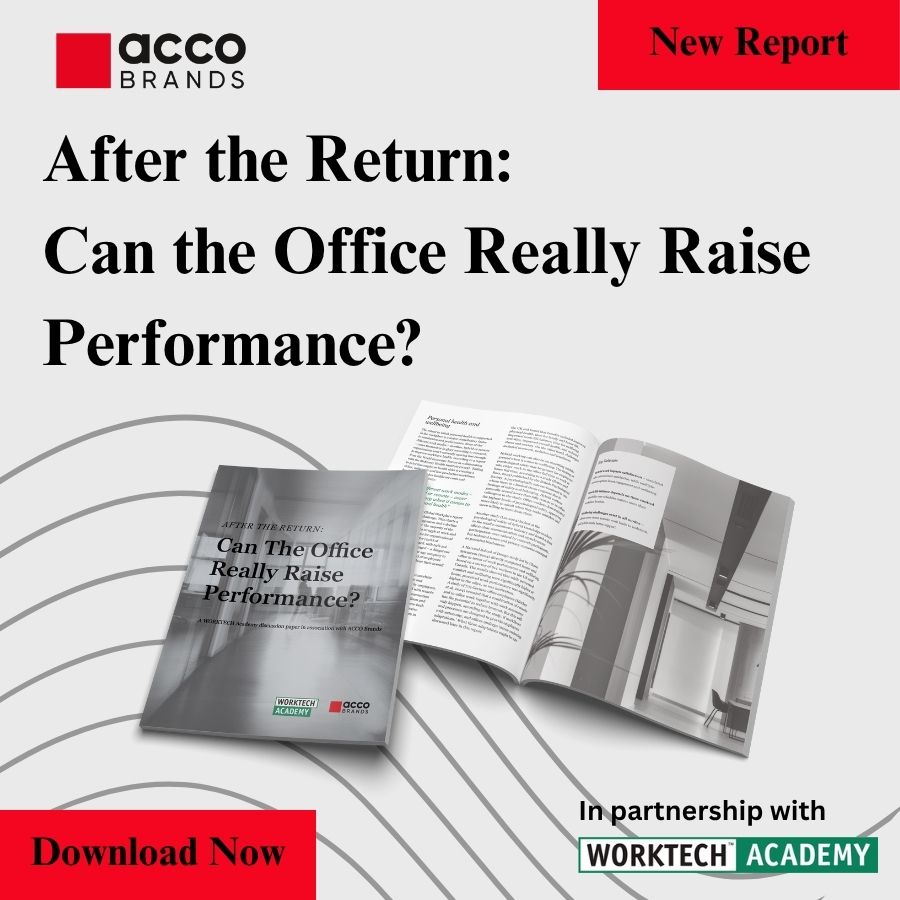Nordic mindset: Scandinavia sets a blueprint for human-aligned workspaces
From Copenhagen to Stockholm, the Scandinavian WORKTECH events redefined workplace innovation around the mind, offering a clear vision of a truly human-aligned future
What should a workplace be in a time when people are overstimulated, digitally stretched and struggling to find focus in hybrid routines? This is a question that has threaded through this year’s WORKTECH conversations, and Scandinavia had a strong response.
WORKTECH Stockholm and Copenhagen took place on the 6th and 10th November respectively, with almost 50 speakers discussing their vision for the future of work. The expert speakers drew from anthropology, behavioural science and spatial psychology to show how workplaces can support attention, collaboration and collective intelligence when designed with intention. Instead of debating mandates or metrics, the Nordic lens focused on how people think, recover and make sense of complexity.
The result is a distinctly Scandinavian blueprint for a more human-aligned future – calm, research-led and grounded in the belief that organisations think best when their environments support the mind.
The human brain as a brief
Hybrid work may have changed the tools people use, but it has not changed cognitive limits around attention, fatigue, memory, and emotional processing. These remain despite technological advancements.
‘The brain doesn’t care where we work. Our minds might, but the brain does not’
– Linda Jarnhamn, Founder and CEO, flow2thrive
In Stockholm, discussions centred on how these pressures collide with the realities of modern work. Dense calendars, shifting routines and digital noise continue to erode clarity, making focus increasingly difficult to sustain. NCC’s Catharina Jogården described how this recognition has reshaped workplace investments, including integrating more focus rooms and recharge spaces in visible, central areas rather than tucked away. This signals that recovery is not a luxury but a requirement for performance. ‘Courage to use recharge spaces is part of the culture,’ she stated.
The Scandinavian perspective pushed back against the global tendency to equate productivity with speed. Instead, speakers emphasised clarity, cognitive pacing and the importance of environments that protect attention and position the workplace as an ally to focus rather than a source of acceleration.
Evidence-based workplace design
In Copenhagen, the conversation shifted from cognition to method. Camilla Jensen Thorup, Head of Workplace Design at C.F. Møller Architects, outlined a practice grounded as much in anthropology and behavioural science as in architecture. For her team, evidence-based design is not a checklist – it is a way of making sense of how people truly work, perceive space and move through their days.
The research shows that individuals experience the same environment in entirely different ways depending on role, sensory preferences and cognitive patterns. Activities rarely align neatly with predefined room types. Belonging and autonomy need to coexist. Even storage becomes significant because personal objects form part of the ‘extended mind’ and influence cognitive ease.
This approach shifts workplace design away from universal templates and toward specificity. Context, culture and behaviour become design materials. Workshops, observation and post-occupancy evaluation create a continuous feedback loop that ensures environments evolve with organisational realities rather than assumed needs.
For C.F. Møller, the goal is not to produce a perfect spatial model but to translate human complexity into environments that help people think clearly and work well. It is a methodology that roots workplace design in lived experience – not spreadsheets, trends or aesthetic conventions
Restoring collective intelligence
In both cities, speakers described a growing imbalance in modern work: organisations spend more time in conversation, yet those interactions often fall short of generating clarity or shared insight. Torbjörn Eriksson, CEO and Founder of Worklife Group, described a growing emotional heaviness in organisations rooted in long discussions, little clarity and rooms dominated by legacy voices. Younger workers, he noted, often arrive with an instinct for experimentation but find themselves constrained by process and hierarchy.
The result is a cognitive stagnation where people feel ‘a lack of creative oxygen’ in the organisation. Eriksson argued that the most significant loss in modern work is not productivity but playfulness.
‘We didn’t lose productivity – we lost playfulness and serendipity’
For him, the answer lies in rebuilding collective intelligence: helping groups think, sense and decide together with more openness. Eriksson introduced a prototype inspired by the mother-tree concept in forest systems – which blends biological intelligence with digital augmentation. The system listens for patterns, pauses and emotional tension rather than just spoken words. It surfaces alignment, hesitation and the themes teams struggle to articulate.
The workplace as a memory system
Philip Tidd and Naomi Sakamoto from Gensler introduced another human-centred lens in Stockholm: the workplace as a form of shared memory. Drawing on research by Professor Anita Woolley, they argued that collective intelligence – the ability of groups to think and perform at a higher level than any individual – relies heavily on shared cues, stories and experiences.
Humans remember spatially. We forget last Tuesday’s meeting, yet recall the details of a childhood room with total clarity. If memory is spatial, then the workplace can be designed as a memory system – a place that encodes culture, identity and purpose through its setting. When knowledge is increasingly dispersed across teams and platforms, physical spaces help consolidate shared reference points. Memory becomes part of the organisational infrastructure, anchoring people in a common understanding even as work becomes more fluid.
They described three design principles that strengthen collective memory. The first is the setting – spaces that create an emotional anchor and reinforce a shared mission. The second is story, embedded in materials, patterns or artefacts that carry organisational narratives. The third is the twist – a moment of surprise or curiosity that makes the environment more memorable and encourages people to explore.
The Scandinavian blueprint
Viewed side by side, the insights from both events formed a coherent philosophy of workplace design. Rather than chasing efficiency or debating attendance, the Nordic perspective focuses on how people think, feel and how they make sense of complexity together.
Whether through cognition-aligned environments, evidence-based design methodologies or workplaces that strengthen shared memory and collective intelligence, it’s clear that the physical environment is not a backdrop but an active part of how organisations function.
In a global landscape often driven by efficiency and performance metrics, Scandinavia offers a model where workplaces are designed to steady the mind, strengthen connection and give teams the conditions to think well together.








